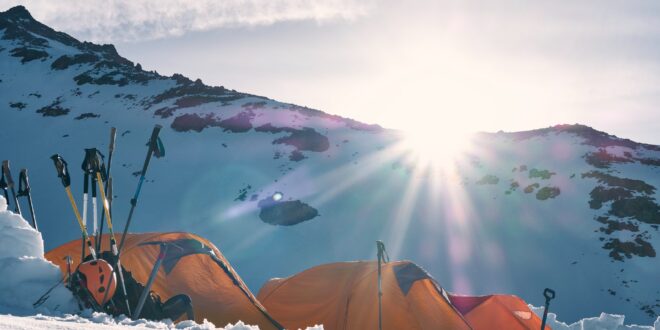You’re losing out on some excellent days in the outdoors if you regularly store your camping gear over the winter and leave it shelved until spring.
The barren trees expose mountain views that you can’t get in the summer. While the chilly temperatures keep the crowds away, giving you a stronger sense of seclusion. Furthermore, the dry, chilly air provides great circumstances for spectacular sunsets. You won’t be able to enjoy such moments in your home garden reading some great garden friendship quotes by guy about home.
Winter camping has its own set of difficulties as well. Temperatures can drop below freezing, even to single digits, in the winter. You’ll need the right knowledge, gear, and equipment to keep warm, dry, and comfortable while enjoying the best camping.
We’ve put together a list of 10 crucial camping recommendations to help you fill your winter with safe, entertaining, and memorable excursions.
1. Layer Underneath Not Just Over The Top
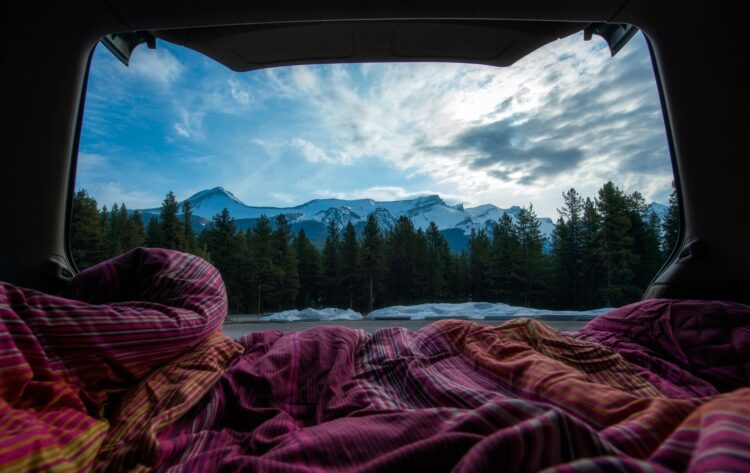
It’s a camping tradition to bring every rug, blanket, and sleeping bag you can find when the weather turns cold. But it’s not necessarily a good idea to pile everything on top. Don’t underestimate the amount of heat that escapes via the ground.
During the night, the chilly soil absorbs your heat, thus a good roll matt is vital. Furthermore, if you’ve brought a large stack of blankets and are getting cold, remember the counterintuitive: yes, pull a blanket over your head, but also add some extra layers underneath.
2. Remember To Shake Your Sleeping Bag
The majority of sleeping bags function by trapping pockets of air that absorb heat from your body and insulate you nicely. To get the most out of your bag, give it a thorough shake before using it to make sure it’s high and full of air. Shake light bags from the bottom to encourage the filling to collect in the higher regions of the bag, where it is most needed for insulation.
Also, don’t overcrowd your sleeping bag with your possessions. It may seem like a good idea, but if you have too much, the bag lining will compress and the insulation will be less effective.
3. Never Tuck Your Head in Sleeping Bag
It’s a natural sequence: first, you bury your shoulders inside the sleeping bag, then your head, and finally you start retreating down inside until you’re completely enveloped. Keep your face out of your bag to get the most out of it. By enclosing yourself, the moisture in your breath will condense within your sleeping bag, making it humid and compromising its insulating properties.
To keep the moisture outside, keep your mouth and nostrils open. Condensation is what makes the tent walls damp when you touch them first thing in the morning. That is not something you want in your sleeping bag!
4. Let Nature Take Its Course
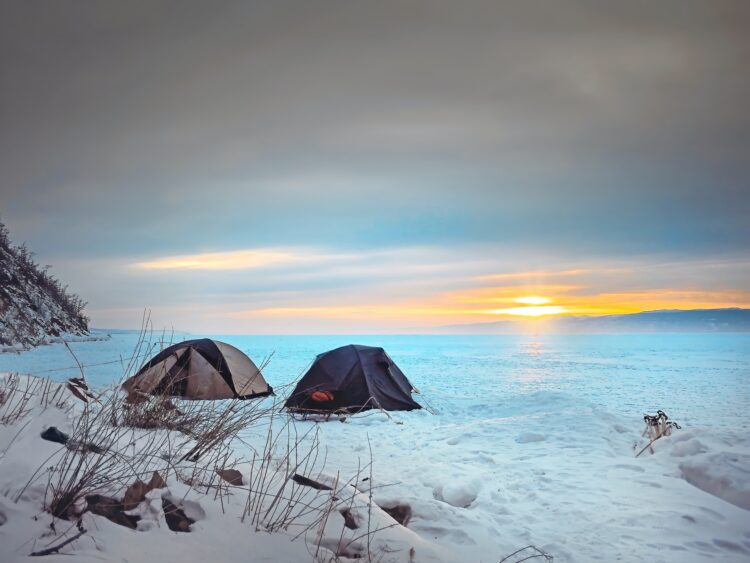
Nothing is worse than tucking yourself in for the night and then realize that all those campfire beers have taken their toll… you need another pee. When you’re chilly, you need to go more often, and it’s pointless to hold it in. Your body must maintain a constant temperature, therefore it expends energy to keep your bladder warm. When you get the opportunity, get out of the tent and let nature take its course; you’ll sleep much better as a result.
5. Take The Right Size Tent (And Sleeping Bag)
We all like the convenience (and relief from back pain) of large family tents. But when it comes to winter camping, size is important. Tents are an important element of the insulating process for obvious reasons, thus the smaller the better.
Take a tiny, two-person tent rather than an eight-man monstrosity if you’re only the two of you. It will better trap your body heat. Similarly, if you’re a small person, buy a small sleeping bag. It will keep you warm.
6. Put Hand Warmers Inside Your Sleeping Bag
Throwing a couple of hand warmers inside your sleeping bag before bed is a wonderful camping alternative to a water bottle. It works great and is something you’re likely to carry anyhow. It is ten times easier and more convenient than a traditional water bottle. Hand warmers are widely available in outdoor and trekking stores.
7. Use Lithium Batteries
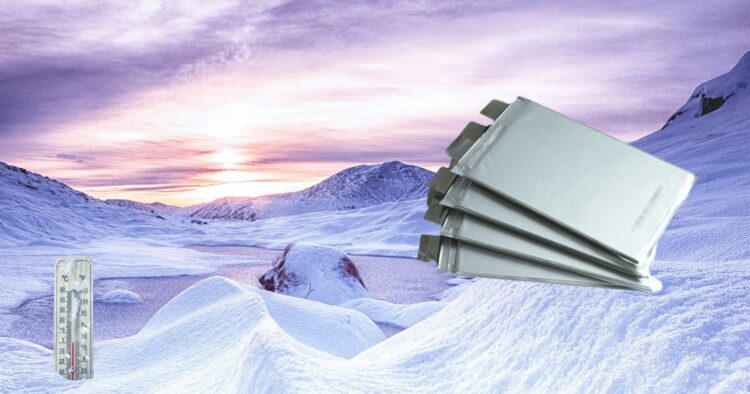
Lithium batteries operate better in cold temperatures and continue to work at lower temperatures than alkaline or NiMh batteries. Not only that, but they’re also lighter and last longer. They’re ideal for winter camping and are now one of the most popular types, so you shouldn’t have any trouble finding them.
8. Don’t Sleep In All Your Clothes
Layering is always a good idea; the goal is to keep comfy and toasty in bed. However, don’t wear all of your clothes; in fact, it’s best to wear as little as possible. It’s a tried-and-true army technique.
If you go to bed in full uniform and then unzip the insulated cocoon of your tent and step out into the cold in the morning, you’ll have nothing to put on to keep warm. It’ll be a chilly start to the day. When you step out into the cold, though, you can start getting dressed, layering up, and keeping warm if you sleep in minimal clothing.
You can always wear a quality jacket by a low moq clothing manufacturer after removing extra layers. It will keep you warm and dry without over-layering. Click here to find out more.
9. Protect The Extremities
We lose a lot of heat through our skulls. People used to say that your head heat accounted for 50% of your total body heat. However, this has lately been demonstrated to be fiction. Wearing a hat, however, can be beneficial, especially if you sleep with your head outside your sleeping bag. Take some sleeping socks and keep them dry so you may put them on right before bed. If it’s really chilly, consider wearing gloves.
10. Turn Things Upside Down
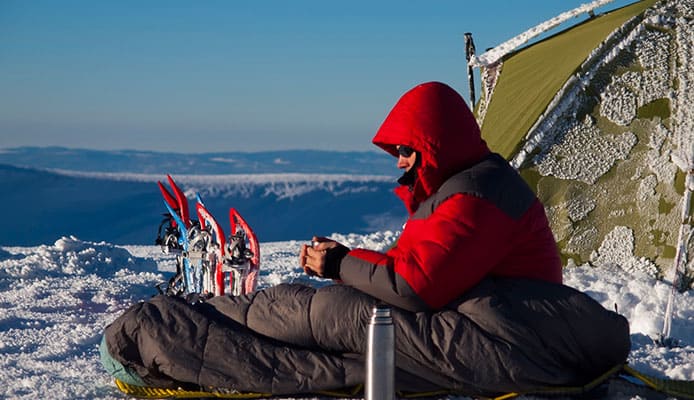
Plan ahead if you’ll be sleeping in temperatures that could be dangerously low. Consider what will happen if things freeze up. Turn the fuel and water on your stove backward. This is important because ice forms from the top-down, having your container’s opening at the bottom will keep it from becoming unusable right away. Where, of course, you can insulate everything that can freeze.
Wrapping Up
Winter camping is equally exciting and fun if things are done the right way. There are just a few points and tricks you need to work on to enjoy the best winter camping experience ever.
Get ready to pull out your old summer camping stuff out this winter. It’s time to make it work perfectly in both the seasons!
 Hi Boox Popular Magazine 2024
Hi Boox Popular Magazine 2024
